When bamboo gets into the ground, it can become notoriously indestructible. Of course, there are ways to keep it from growing into a menace. Rhizome barrier systems can be very effective, while cavalier efforts to kill it with bleach or gasoline are less so. More shrewdly, many gardeners solve this problem by planting their bamboo in pots. Naturally, there are pros and cons to this strategy.
With its expansive root system, bamboo prefers to be in the open ground where it has room to spread out. But many varieties of bamboo can grow well in a pot. In general, clumping bamboos, those with less aggressive roots and rhizomes, will be more suitable for containers. These include genera like Himalayacalamus and Otateae. Dwarf bamboos, like Sasa and Pleioblastus, which usually only grow a few feet tall, are also great in pots.
NOTE: This article first appeared in March 2021, most recently updated in March 2024.

Why and how to grow bamboo in a pot
The advantages of growing bamboo in a pot are pretty obvious. First and foremost, it’s a fairly reliable way to keep the fast-growing grass from taking over your garden. But it’s not foolproof. For example, if you sit a potted bamboo on the ground, the roots will eventually make their way through the drain hole in the bottom of the pot. In time, those roots will gain a foothold and establish themselves in the terra firma. It’s essential, therefore, to place something like a stepping stone under the pot to keep the roots away from the earth.
To keep renegade roots from latching onto open earth, you can also keep moving your bamboo pots around. And this brings us to another benefit of container gardens. They are so much easier to re-arrange. Whether your bamboo pots are on a larger property or a confined patio, it’s nice to be able to move them around according to the changing of seasons. Furthermore, if you move to a new home, you need only pick up your pots, rather than excavate your root balls.
Bamboo roots in the pot
Like most plants, and grasses in particular, bamboo really prefers to be in the ground, where the roots have room to stretch and direct access to the bounty of the earth. Potted bamboo can have a tendency to get root-bound, dry out too quickly and suffer from nutrient deficiency. So it’s important to repot your bamboo every year or so and make sure the roots are not getting too crowded. When doing this, you can also divide the rootball to propagate new plants and fill more pots. This will be especially important if you are growing running bamboo, like Phyllostachys, in a container.
Watering potted bamboo
But potted bamboo will also require a little extra care and attention when it comes to watering and feeding. The open earth can be more forgiving, but once a pot dries out, there’s no place for the roots to get water. So you’ll need to keep a close eye on the moisture level. Bamboo likes to keep moist, but not soggy. So pots usually need watering at least twice a week. But if they get root bound, as potted bamboo often does, the water might just roll off the top of the dirt, unable to penetrate the densely packed soil. So keep an eye on that.
Fertilizing bamboo in a pot
Nutrients can also run out quickly when bamboo is in a pot. And bamboo likes pretty rich soil, high in nitrogen. You’ll want to add some organic compost or horse manure a couple times a year. It’s best to do this in early spring, just before the growing season. Do it again in mid or late summer, late in the season, or before the second growing season, depending on your climate. Check out our in-depth article on fertilizing bamboo for more details and advice.
Potted bamboo in the cold
Speaking of climates, if your bamboo has to contend with freezing winter temperatures, it will be happier in the insulated earth. The roots of a potted bamboo plant will be more susceptible to frost damage. One more advantage of container plants, you can move them inside or into a greenhouse when the weather gets bitter cold.
With all that in mind, here are nine species of bamboo that will stand a better chance of success in a pot or container.
Ideal bamboo species for pots
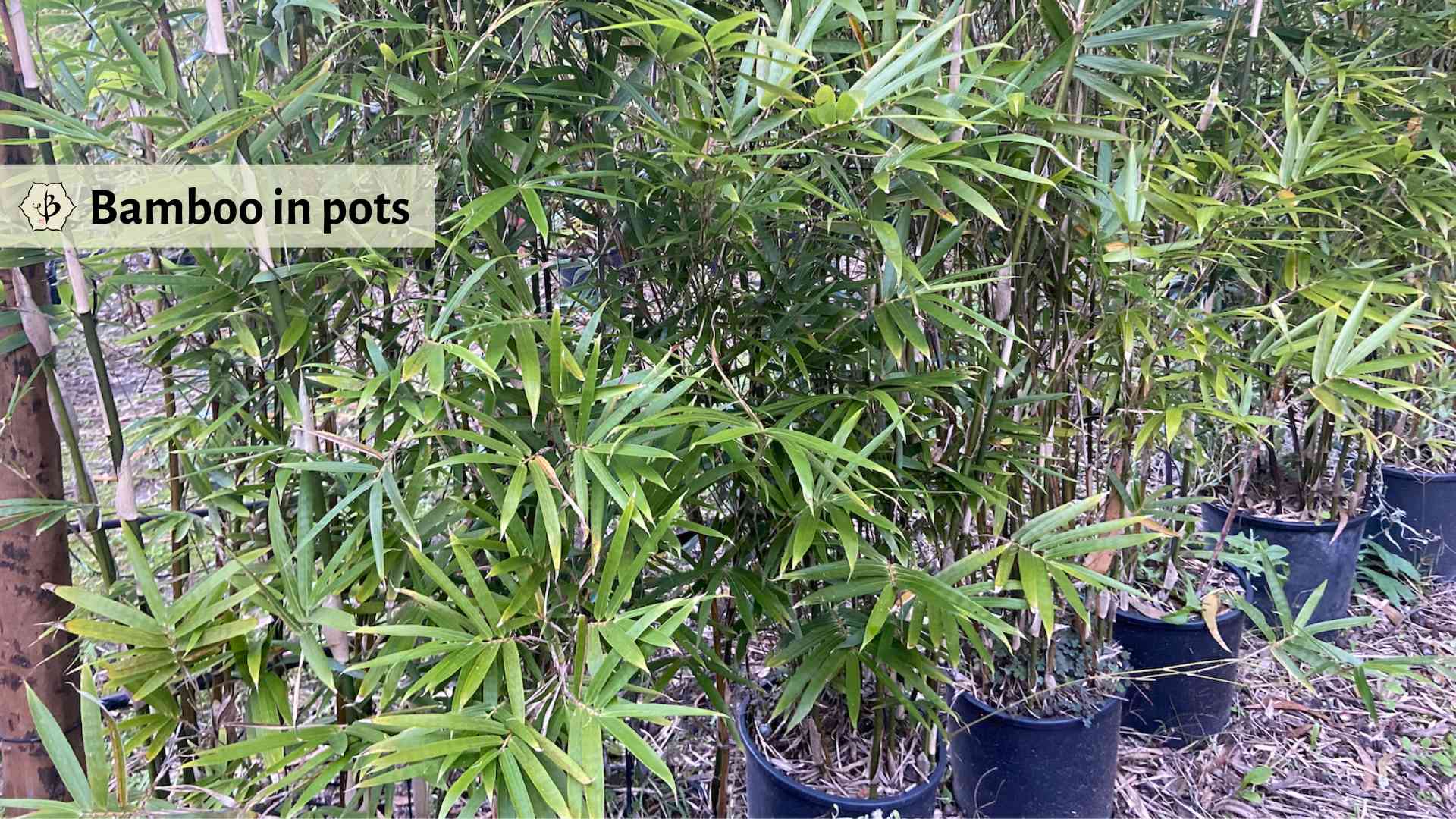
Bambusa multiplex, or Hedge bamboo
The typical variety of this species is often called Hedge Bamboo, based on its dense growth habit and thick foliage, which provide an effective privacy screen. A compact, clumping root system also makes it ideal for a pot or container. These grow about 10 feet tall, with half-inch culms. Hardier than most Bambusa specimens, they are cold-tolerant to 15-20º F. There are also a number of subspecies, including ‘Golden Goddess’, a very popular ornamental for its manageable size and greater hardiness. (Not to be confused with Phyllostachys aurea, also called Golden Bamboo.) Another cultivar, ‘Alphonse Karr’, is among the most highly sought-after of all ornamental bamboos. Distinctive green stripes on bright yellow culms give this variety a stunning appearance.
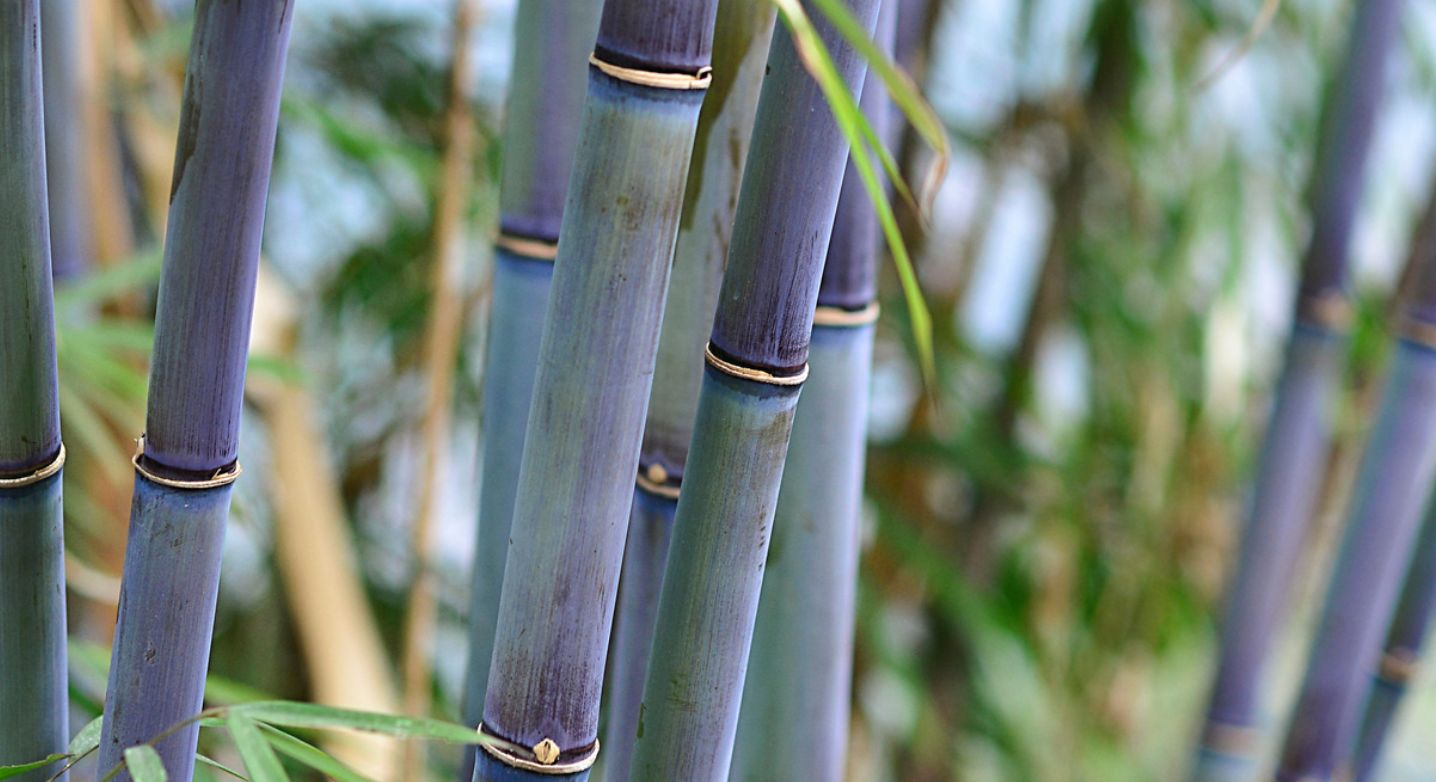
Drepanostachyum khasianum, or Purple jade bamboo
This unusual genus is closely related and often confused with Himalayacalamus. The main difference is in the nodal branching. Drepanostachyum has many equally sized branches at each node, whereas Himalayacalamus has just one dominant branch. Native to the highlands of northern India, this is an especially attractive and colorful species. New shoots have a burgundy hue, and the white powder gives them a blueish and sometimes purple tint. Over time they fade to orange-yellow. Culms are slender and elegant, growing 10-20 feet tall. Nodes can be very pronounced, with a white ring that makes them stand out. Ideal in cooler climates or a shady setting. Like most varieties of Himalayacalamus, this bamboo is especially well-suited for pots and containers.
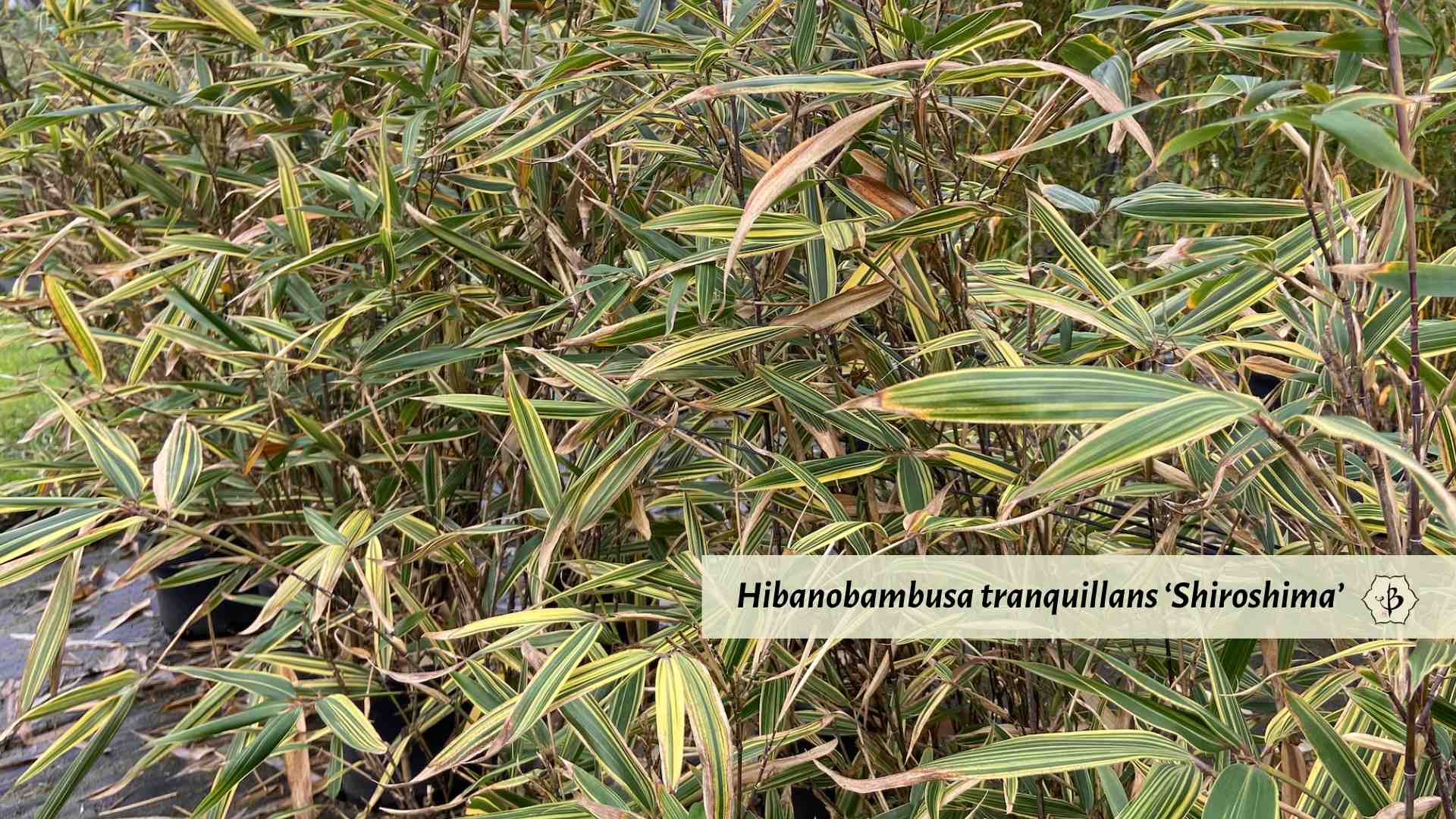
Hibanabambua tranquillans “‘Shiroshima’
Rumor has it that Shiroshima bamboo was one of the first living things to recover after the atomic bombing of Hiroshima in 1945. Whether or not that’s true, this exotic species makes an excellent ornamental specimen for a wide range of growing conditions. Plants only grow about 5 to 10 feet tall, with beautifully striped leaves. They do well in freezing winters and are also drought tolerant. They thrive in full sun as well as shade, in the ground or in a pot, and even indoors.
Himalayacalamus hookerianus, or Himalayan blue bamboo
Native to northern India and the foothills of the Himalayas, the genus Himalayacalamus includes a colorful assortment of temperate, clumping bamboo. Himalayan Blue typically grows about 15 to 20 feet tall, with narrow culms, 3/4 to 1 inch thick. Young canes have a powdery blue color. Sometimes they even turn turquoise, with distinctive white rings that highlight the nodes. As they age, the canes turn more olive green and then golden yellow. If one side gets more direct sunlight it can take on more of a reddish hue.
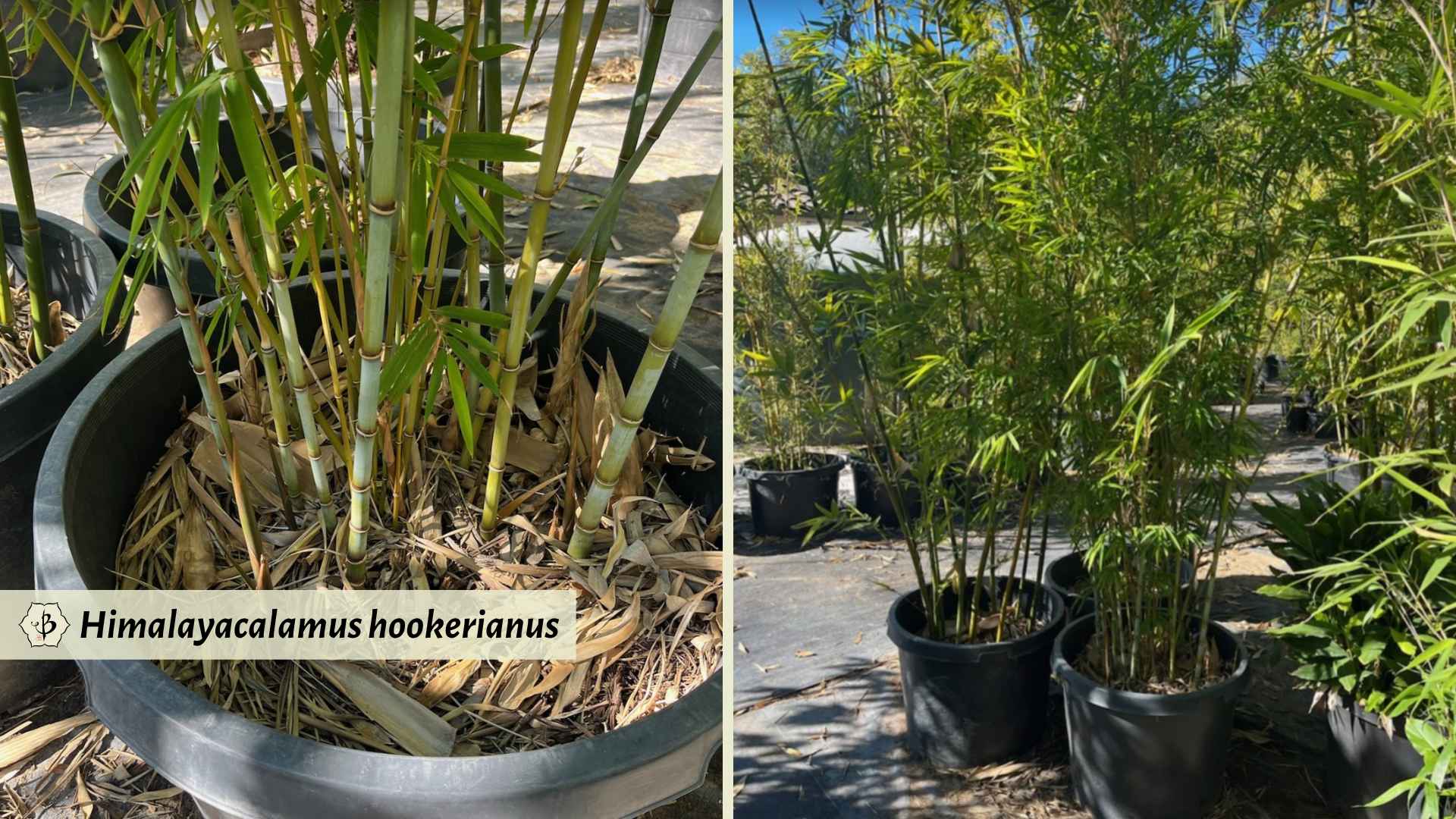
Himalayacalamus species also have leaves that are thin and wispy, adding to their graceful, attractive appearance. Mature clumps are about 10 feet wide but can thrive in a medium to large size container. Not suitable for hot and humid climates, they prefer high altitudes and/or shady, filtered sunlight. Cold hardy down to about 15º F. You might also find subspecies listed as ‘Baby Blue’ and ‘Teague’s Blue’.
Take a look at our article on Blue Bamboo to learn more.
Otatea acuminata, or Mexican weeping bamboo
Of the tropical clumping bamboos, the genus Otatea includes some of the smaller and more compact varieties. They tend to have slender culms, no more than 1.5 inches thick, and a manageable height of 20 feet or less. Some dwarf varieties of the genus will only get a few feet tall with pencil-thin canes. Their small size makes them ideal for pots and containers.
The most common species for ornamental cultivation, O. acuminata or Mexican Weeping Bamboo, is popular in the warmer regions including California and the Deep South. But it can survive mild freezes to about 20º F without incurring frost damage. The dwarf cultivar, Otatea acuminata ssp. aztecorum ‘Chica’, only gets about 3 feet tall and is perfect in a pot.
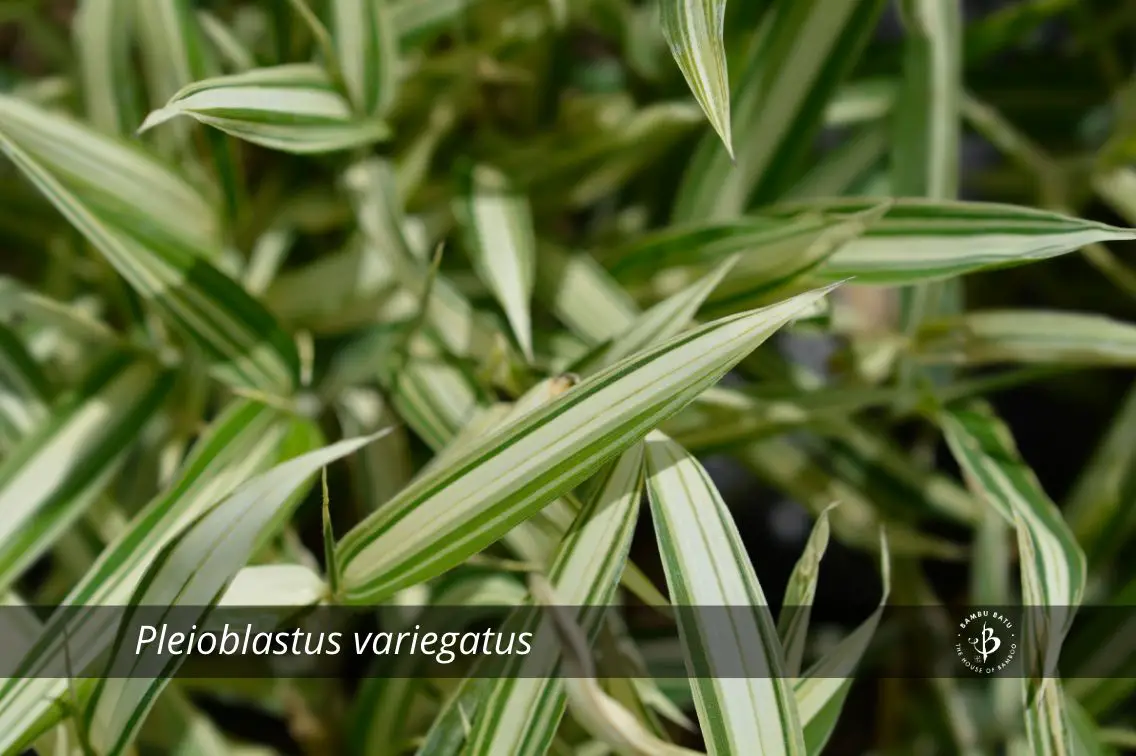
Pleioblastus variegatus, or Dwarf whitestripe bamboo
The genus Pleioblastus includes numerous species of dwarf bamboo, which typically grow just a few feet tall. Despite their diminutive stature, these running bamboos have some very aggressive root systems. This makes them ideal candidates for pots. A container will keep the bamboo from spreading invasively, but with little or no effect on the plant’s height.
Several of these varieties are widely available and fairly popular in North America, at least among bamboo enthusiasts. Any of them would be suitable for a pot, but P. variegatus (sometimes identified as P. fortunei) is one of the most attractive species, with its green and white striped leaves. It also makes a lovely low hedge or ground cover, growing only 2 or 3 feet tall.
Phyllostachys aurea, or Golden bamboo
Also called fish pole bamboo or Golden Bamboo, this is one of the most widespread bamboo species of all. It’s especially easy to grow in a wide range of climates and soil types, but can also become invasive if not properly contained. Containing the plant in a pot is one practical solution to that problem. Golden Bamboo typically grows 20 to 30 feet tall, with culms just over an inch in diameter. As with other Phyllostachys, the green culms will turn yellow with age. And it’s cold hardy to about 0º F.
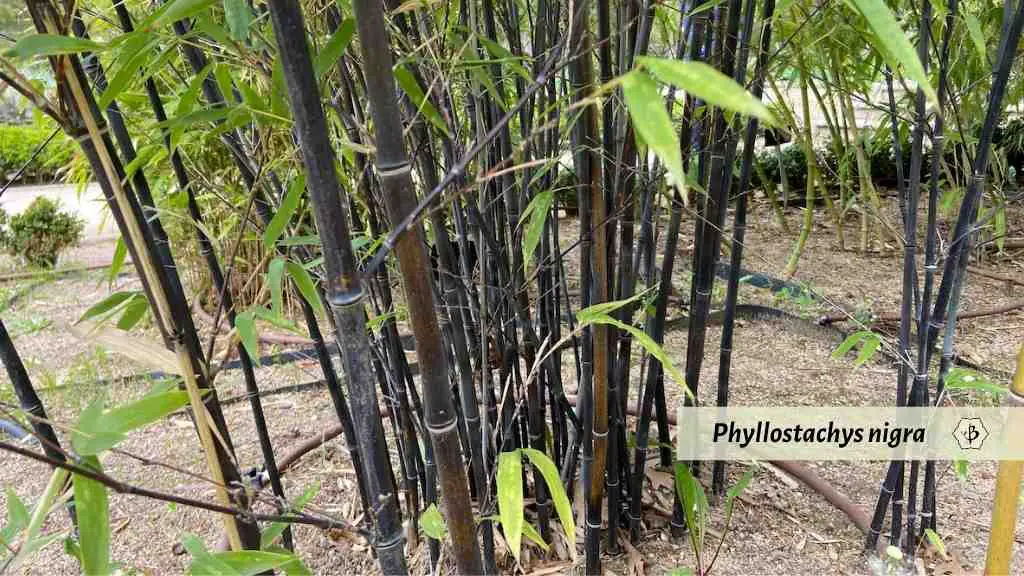
Phyllostachys nigra, or Black bamboo
The distinctively dark brown shoots make this one of the most highly desirable strains of bamboo, and any nursery that sells bamboo is likely to have some of this on hand. As the plant matures, the dark color of the culms grows richer, making for a very attractive contrast against the bright green leaves. Poles retain their color after harvest and are excellent for crafts and light carpentry projects. In optimal conditions, this Black Bamboo can get about 2 inches thick and 20-30 feet tall. In a pot, it may only get around half that size. Hardy to about 5º F.
Pseudosasa japonica, or Arrow bamboo
Arrow Bamboo earned its name from its long, strong, straight poles, which Samurai warriors once used to make arrows. Today it’s a great choice for planting in shady corners of the garden. Also, though technically classified as a runner, it has a far more restrained growth habit than most bamboos of that class. The broad green leaves make this a very vibrant and attractive specimen. They like filtered partial sunlight and pretty moist soil. In other words, they’re shade-friendly but not drought-tolerant.
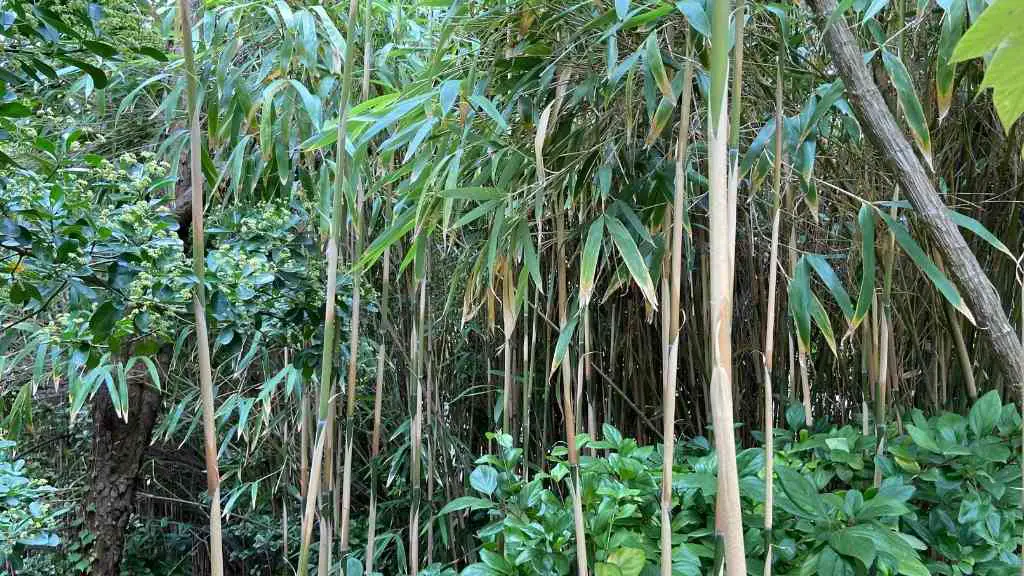
Sasa veitchii, or Kuma-zasa
Bamboo in the genus Sasa, also called broad-leaved bamboo, are small plants, mostly native to Japan, with running rhizomes. Like Pleioblastus, their compact size makes them a good choice as accents or in confined spaces. But beware that the roots of this running bamboo can spread quickly if not well contained. As with most dwarf bamboos, Sasas are native to the forest understory, and so they prefer locations with partial sunlight or mostly shade. They are also quite cold-hardy.
Sasa veitchii, or Kuma-zasa, is an especially popular type of bamboo shrub. Broad leaves are deep green, but in cold winters the leaf edges turn pale and take on a striking variegated appearance. They normally grow about 5 feet tall, but probably won’t reach that size if kept in a pot. Hardy to 5º F.
Learn more
If you enjoyed learning about the best bamboo species to put in a pot, you may find some of these popular articles interesting as well.
FEATURE PHOTO: Dwarf whitestripe bamboo, or Pleioblastus variegatus, is perfect in a pot.

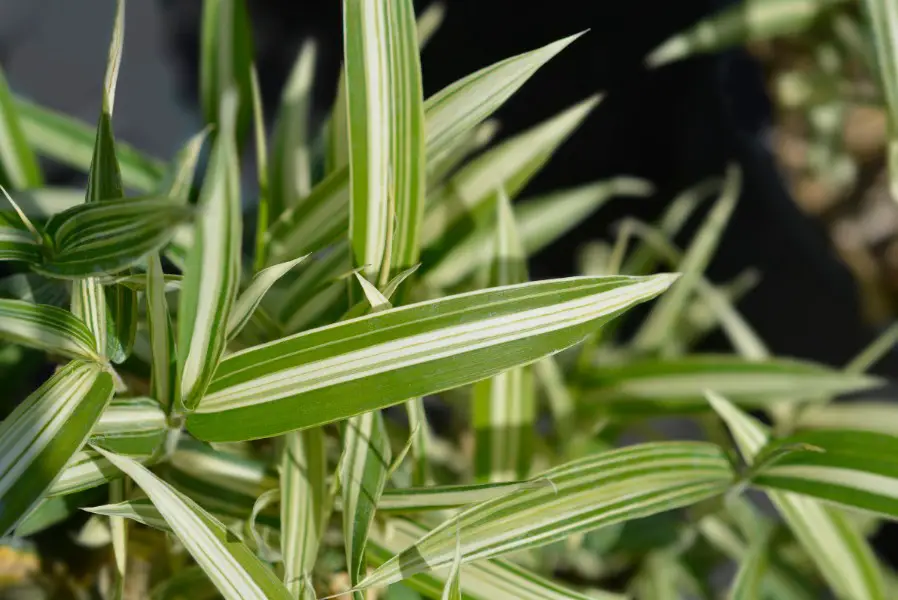
























I am looking for a dwarf bamboo in a pot for a balcony which gets full sun up to midday. Wanting some screening and something attractive. Would dwarf pleioblastus or bamboo multiplex be suitable. I am in Melbourne.
Yes, those are nice-looking species for a partially shaded patio. Another pretty one is Hiroshima Bamboo.
How deep do you plant bambo I have a wooden container a trough
It’s one ft deep an 5 ft long
One foot is deep enough for dwarf bamboo varieties.
Hi
I’m in Lexington KY, zone 6b, with a patio having a northeast exposure.
I would like to plant two pots of bamboo and here are some ot the questions I can think of:
1. How do I keep them at around 8 feet tall. Can they be pruned or do I need a “dwarf” variety?
2. What varieties have the lowest temperature ratings for the winter? I plan to wrap them in bubble wrap and top them with shredded rubber tire mulch. This has been successful with my daffodils, tulips, etc.
3. Do I cut them down once winter dormancy occurs?
4. Can I cut them down once winter dormancy occurs and bring them indoors for the winter?
5. When do I fertilize and what with?
6. What else should I know?
7. Is there a “user manual” I can purchase?
Thanks
Ed
Let’s schedule an appointment.